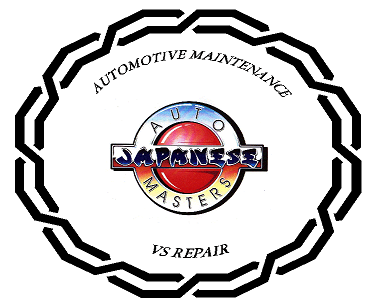
Over the course of owning a vehicle, routine maintenance and continued care are necessary to ensure long lasting quality and performance. All too often automobile owners will confuse maintenance with repair, however, understanding what separates them can be beneficial in saving time and expenses. Today we will review the key differences in automotive maintenance and repair and point out the key advantages to keeping your vehicle running as optimal as possible.
Maintenance: Automotive maintenance generally refers to routine checks and services necessary to prevent premature failure or malfunctions of a vehicle’s components and provide the overall good standing health of your vehicle. By following a regular maintenance schedule, you are investing in the longevity, quality, reliability, and safety of your vehicle. Let’s highlight a few categories:
- Routine Comprehensive Advisories: a vehicle maintenance and safety advisory for your vehicle makes you aware of any current or future concerns to avert costly repairs and/or potentially dangerous situations that may be present.
- Mileage Maintenance: most automobile manufacturers have a recommended mileage-based maintenance schedule so your vehicle will maintain the performance and reliability you have come to know and expect. Routine services include oil and filter changes, engine and cabin air filter replacement, tune-up, and timing belt replacement.
- Tire Maintenance: Tires are a vital component of your vehicle as they are responsible for maintaining good handling, response, and stability of the vehicle, as well as helping to maintain good fuel efficiency. With consistent tire maintenance, including proper air pressure, rotation, balancing, and wheel alignment, you can expect extended life from your tires.
- Fluid Inspections and Exchanges: a vehicles blood runs through its various system’s and should be exchanged on a regular basis; engine oil, engine coolant, brake, clutch, power steering, transmission, and driveline fluids are some of the examples of fluids that should be exchanged on a regular mileage routine to increase the life expectancy of the vehicle’s components and systems. Failure to provide your vehicle with these maintenance services can lead to costly repairs.
- Battery Maintenance: No one enjoys getting in their vehicle with the expectation that it will not start, but there are maintenance services to help prevent this from happening. Battery inspection during vehicle services is a common key to prevent unexpected system failure; testing the battery’s state of charge and state of health, cleaning corrosion from the terminals, and verifying good battery connections are just a few examples of routine battery maintenance.
Repair: Automotive repair is generally not what anyone wants to think of when they awake each morning. As discussed above, maintenance focuses on the prevention side of service, while automotive repair and premature failure of systems is the unexpected issue that occurs. Generally automotive repair refers to correcting failures and malfunctions that have affected a vehicle’s performance; engine, transmission, steering and suspension, etc. Now let’s highlight these repair categories:
- Diagnosis: When an abnormal concern arises, Certified Automotive Technicians may utilize the connection of diagnostic equipment to the vehicle for retrieval of trouble codes, and basic testing of computer components. There is also mechanical and electrical diagnosis that may be needed for brakes, cooling system, driveshaft and axles, fluid leaks, heater, engine noises, steering linkage (tie rods, idler arm, rack), suspension (shocks, struts, tires, wheels), vibrations, alternator, battery, starting system, basic electrical circuits (lights, horn, signals, wipers), electric cooling fan, electrical wiring, fan blower, and others. Diagnosis can become very involved with the technology of today’s automobiles.
- Part Replacement: Repairs generally involve a damaged or failed system component that requires replacement to restore the system’s performance. Examples of these components can be found in brake, steering, suspension, transmission, driveline, or electrical systems.
- System Repairs: Examples of a vehicle’s systems would be the air conditioning system, engine cooling system, and exhaust system. If one of these systems has a failure, generally there is a specific component of the system that has malfunctioned and needs replacement, and sometimes it may also require the replacement of multiple components within the system.
Maintenance and Repair: There is a relationship between maintenance and repair. It is imperative to understand that by investing in routine preventative maintenance, you can significantly reduce the number of chances of incurring breakdowns and repairs in the future. It is called preventative maintenance for a reason, as it helps to keep you aware of any minor concerns that may arise and become a major issue and costly repair.
Additionally, a well-kept and maintained vehicle indicates the investment that has been made into the vehicle and will help with retaining a significant resale value to a prospective buyer. Documentation is the key, keep good records of the investments made into your vehicle, both maintenance and repair, and it will help you in demonstrating the value they are investing in.
Review: Routine preventative maintenance and repair are the 2 sides of a double-edged sword when keeping your vehicle in tiptop operating condition. While maintenance is considered preventative and routine care for your vehicle, repair arises when components or systems of the vehicle fail and require attention in the way of fixing or replacing. Routine preventative maintenance helps to ensure the performance and reliability of your vehicle, while also helping to prevent breakdowns and costly repairs. In human terms, consider it as taking your daily blood pressure medication to prevent a heart attack or stroke…that really puts it into perspective, doesn’t it?